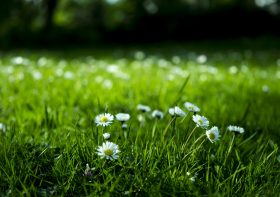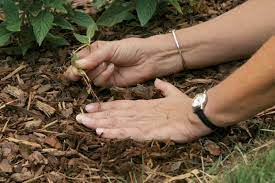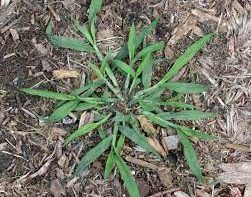How to Get Rid of Weeds in Lawn

You probably do a lot of weeding if you keep track of how many hours you spend in your garden. Although the initial few weeks of clearing out these pests can be satisfying, it soon becomes tedious. You only have six easy strategies to make your garden weed-free.
What’s that? A garden needs weeds? The healing power of weeds is nature’s remedy for plants that have been left in an unproductive or damaged state. However, gardeners and weeds may disagree on what constitutes a successful recovery. With a better understanding and application of the strategies here, you will be able to win any future battle, allowing you to spend more time in your garden.
1. Let sleeping weeds lie
To minimize soil disturbance in lawns, use a sharp knife with narrow blade to cut through the roots of dandelions or other lawn weeds. This will prevent them from digging out their source. Remember that weed seeds can stay dormant for long periods of time. Only the top inches of soil will get enough light to stimulate germination. Hidden weed seeds can be brought to the surface by digging and cultivating. If you ever open a patch, a lot of soil, ants will likely find them. Only dig when it is necessary and immediately apply plants or mulch to the affected area.
2. Mulch, mulch, mulch
Mulch is beneficial for plants because it keeps the soil moist and cool, and robs weeds of sunlight. Mulch can be used to house crickets and carabid insects, which are known for their ability to consume thousands of weed seeds.
You will often find that the mulch you used contained weed seeds. Mulch should be kept at 2 inches in depth. Anything more than that can cause soil to lose oxygen. You can also cover the soil’s surface with newspaper, cardboard or biodegradable fabric to keep weeds at bay. Then, spread prettier mulch on top.
For areas that are not normally dug, such as the root zone of trees and shrubs, you should choose tough landscape fabric to block the light. However, there is a catch: Once enough organic matter has accumulated on the landscape fabric, weed seeds that have been dropped by birds or carried in the wind can start to grow. To make the fabric’s bottom layer effective, they must be pulled so that the roots can be pushed into the ground.
Monday: Get rid of weeds. Tuesday: Kill all weeds
The first season of a gardener’s career will be difficult if you are a novice or work in a weedy area. Stick to your weeding plan and don’t try to take over more space than you can handle. Keep weedy areas mowed until they are gone.
3. When the weeding is good, weed
When it comes to weeding, the wise advice is “Pull when you’re wet and hoe when you’re dry.” You can have a satisfying weeding session after a rainstorm. Make sure you have gloves, a pad for sitting, and a tarp or trug to collect the dead. You can also carry a table fork in your pocket to help you remove chickweed and henbit tendrils as you go. To remove taprooted weeds such as dock or dandelion, you can use a fishtail-weeder when going after larger criminals.
Dry conditions will cause weeds to shrivel up and eventually die if they are cut just below the soil line. This is especially true if your edge is sharp. Use an old steak knife to remove weeds from the roots of mulched beds. Then, patch any gaps left in the mulch with a patching tool.
Composting weeds is done with heat
There are few experiences that compare to watching weeds shrink in the sun after a morning of weeding. But what do you do? If the weeds are not contaminated with seeds, their best place of rest is a compost bin or pile. However, about half of the weeds that you pull may contain seeds. It is difficult to separate the seedies and other weedies, so weed seeds in compost can be killed by increasing the heat in the heap.
Heat it up. Mixing and combining materials is key to a hot heap. Instead of trying to heat a heap that is not ready to go, wait until the weedy pile has reached a near-rotten state before you attempt to fix it. You can then solarize small amounts of moist compost using black plastic nursery liners. These are placed in clear plastic bags that you place in the sun for up to three days.
Now, you can cook. Simply plug in an old Crock-Pot outside, turn it down to the lowest setting and heat compost while you sleep. Most weed seeds will be destroyed by three hours at 160 degrees F.
The heat treatment of weedy compost kills many microscopic life-forms. It is a good idea for cooked compost to be reprocessed for at least two to three weeks before being used in the garden. It will soon be infused with humic acid and other plant-pleasing compounds by being placed in a plastic container with a few earthworms from your garden.
4. Take their heads off
If you are unable to remove weeds from your garden, then the best option is to cut off their heads. Deadheading is a good way to save time and prevent the “seed rain” from starting. The reseeding of perennial weeds like bindweed is reduced by removing the tops. They also use up food resources and exhaust their root buds, thereby limiting their spread.
To cut down ragweed and poke towers, you will need pruning loppers. Or you can use a string trimmer with a blade attachment to get rid of brambles or prickly thistles. No matter what method you use, cutting down weeds will prevent them from growing.
5. Pay attention to the spaces between plants
By shading the soil between plants, close plant spacing can prevent emerging weeds. By using mass plantings, or in a series of closely-spaced plants instead of polka dots with many scattered ones, you can avoid weed-friendly gaps. It is possible to reduce spacing by about 25%.
However, most spacing recommendations assume that adjacent plants will not touch once they reach maturity. This is why it is important to follow the guidelines when dealing with plants susceptible to foliar diseases such as bee balms ( Monarda didyma, cvs. USDA Hardiness Zones 4-9) or phloxes( Phlox paniculata, cvs. Zones 4-8).
6. Water only the plants that you love, and not the weeds that you have.
You can make drought go away by denying weeds water. Drip or soaker water hoses placed under mulch irrigate plants efficiently, while making nearby weeds thirsty. Depriving weeds water can reduce weed-seed growth by 50 to 70% in most climates. Keep an eye out for deep-rooted perennial weeds such as nutsedge and bindweed, if they are not kept moist. If drip irrigation is used, they can quickly take root.
These strategies are not enough to make your garden weed-free. You can also enrich your soil with organic matter whenever you have the chance. Although soil scientists don’t know how this works, it is believed that fewer weed seeds germinate when there are fresh infusions good compost or organic material. It is simple and straightforward: Weed seeds are less likely to emerge if the soil is well-fed and healthy.




Leave a Reply